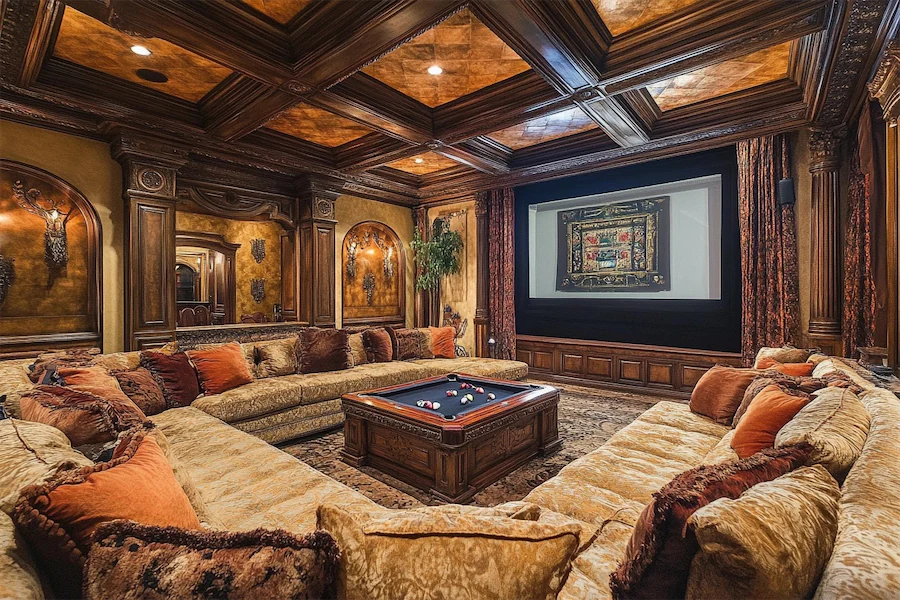Designing an Italian Renaissance-inspired entertainment room involves recreating the grandeur and elegance of 15th to 17th-century Italy, characterized by classical architecture, opulent materials, and intricate craftsmanship. Here’s a comprehensive guide to achieving this timeless aesthetic:
Introduction to Italian Renaissance Entertainment Rooms
The Italian Renaissance was a period of cultural rebirth, emphasizing symmetry, proportion, and the revival of classical antiquity. An entertainment room inspired by this era exudes sophistication, with a focus on harmonious design and luxurious details, providing an elegant setting for social gatherings.
History and Origins of Italian Renaissance Design
Originating in Italy during the 14th century, the Renaissance marked a departure from medieval styles, drawing inspiration from ancient Greek and Roman art and architecture. This movement emphasized humanism, balance, and proportion, influencing various aspects of design, including interiors and furniture.
Key Features of Italian Renaissance Entertainment Rooms
- Architectural Elements: Incorporate classical features such as columns, arches, and coffered ceilings to establish a grand and structured environment.
- Luxurious Materials: Utilize rich materials like walnut, marble, and velvet. Walnut was favored for its suitability for detailed carving, a hallmark of Renaissance furniture.
- Intricate Carvings and Inlays: Select furniture pieces adorned with detailed carvings, inlays of ivory or bone, and intarsia work, reflecting the period’s emphasis on artistry.
- Symmetry and Proportion: Arrange furnishings and decor symmetrically to mirror the Renaissance pursuit of balance and harmony.
- Classical Motifs: Incorporate decorative elements such as acanthus leaves, cartouches, and mythological figures to enhance authenticity.
Applications of Italian Renaissance Style in Entertainment Rooms
- Seating Arrangements: Opt for substantial, ornately carved wooden chairs and settees upholstered in rich fabrics. The Savonarola and Dante chairs are iconic designs from this period.
- Entertainment Center: House modern entertainment systems within cabinetry that features Renaissance design elements, such as pilasters and decorative moldings, to maintain stylistic coherence.
- Lighting: Install grand chandeliers and wall sconces with designs inspired by classical antiquity, using materials like wrought iron or gilded metal to add opulence.
- Decorative Accents: Adorn the space with tapestries, frescoes, and sculptures that reflect Renaissance art, enhancing the room’s cultural depth.
Considerations When Designing an Italian Renaissance Entertainment Room
- Authenticity vs. Modern Comfort: While aiming for historical accuracy, ensure that the room accommodates contemporary comforts and technology seamlessly.
- Cohesive Color Palette: Choose a color scheme that includes deep, rich tones complemented by gold or bronze accents to evoke the period’s luxury.
- Attention to Detail: Focus on the quality of craftsmanship in furnishings and decor, as Renaissance design highly values artistry and detail.
Conclusion
An Italian Renaissance entertainment room offers a blend of historical grandeur and refined elegance, creating a sophisticated space for leisure and socialization. By incorporating classical architectural elements, luxurious materials, and intricate craftsmanship, you can recreate the timeless beauty of the Renaissance in a modern setting.
